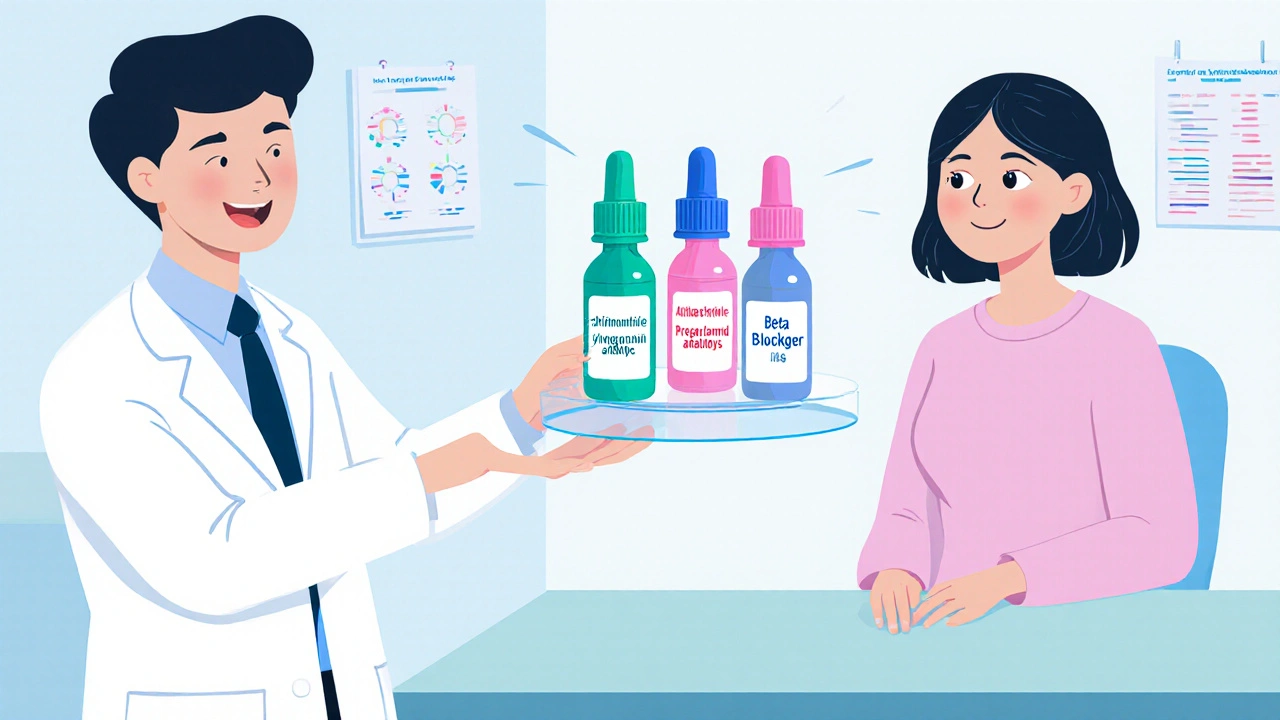Brimonidine Tartrate: Uses, Benefits and Safety Tips
When working with brimonidine tartrate, a prescription eye drop that lowers intra‑ocular pressure by stimulating alpha‑2 receptors. Also known as Alphagan, it’s primarily used to manage glaucoma, a progressive optic‑nerve disease caused by high eye pressure and ocular hypertension, elevated eye pressure without visible damage yet. The drug belongs to the class of alpha‑2 adrenergic agonists, agents that reduce nerve‑signal release to the ciliary body, decreasing fluid production in the eye. Delivered as eye drops, it reaches the target tissue directly, minimizing systemic exposure. In short, brimonidine tartrate combines a specific mechanism with convenient dosing, making it a go‑to option for many eye‑care professionals.
Why It Matters: Core Benefits and Practical Considerations
First off, the main advantage is the drop’s ability to drop pressure quickly. Studies show a typical 0.2% solution can cut intra‑ocular pressure by 20‑30% within an hour, and the effect lasts up to 12 hours. That duration means most patients only need to apply the drops twice a day, which fits easily into a morning‑evening routine. Another plus is its dual action: besides lowering pressure, brimonidine also offers mild vasoconstriction, reducing redness that sometimes accompanies other glaucoma meds. For people who experience stinging with prostaglandin analogues, this can feel noticeably gentler. When you start a new prescription, the first few weeks are key. Your eye doctor will likely schedule a baseline pressure reading, then check again after one week and again after a month. Those check‑ins help tailor the dose—most folks use one drop per eye twice daily, but some need one drop only once a day or a higher concentration if pressure stays stubbornly high. Remember, consistency matters; missing a dose can let pressure creep back up, potentially reversing any gains you’ve made. Side‑effects exist, but they’re usually mild. The most common complaints are a temporary burning sensation or mild eye redness right after installation. A small percentage notice dry eyes or a mild headache, especially if they’re sensitive to the drug’s vasoconstrictive action. If any side‑effect feels severe—like persistent eye pain, vision changes, or allergic‑type swelling—stop the drops and call your eye care provider right away. Because the medication acts locally, systemic side‑effects such as low blood pressure are rare, but they can happen in very sensitive individuals or if large amounts are mistakenly swallowed. For patients with certain conditions—like a history of severe depression, severe heart‑block, or uncontrolled hypertension—your doctor might opt for a different class of medication. The reason is that alpha‑2 agonists can, in theory, affect central nervous system pathways, although real‑world reports are limited. Always share your full medical history, especially any psychiatric or cardiovascular concerns, before starting brimonidine. Finally, proper storage keeps the drops effective. Keep the bottle at room temperature, away from direct sunlight, and close the cap tightly after each use. Most manufacturers suggest discarding any unused solution after 30 days once opened, even if there’s still liquid left. This prevents bacterial growth and ensures you’re always using a potent dose.
Now that you’ve got the basics—what brimonidine tartrate is, how it works, who benefits, and what to watch for—you’re ready to dive deeper. Below you’ll find a curated set of articles that explore related topics, from detailed dosage guides to real‑world patient experiences, helping you make the most of your eye‑health regimen.
Brimonidine Tartrate vs Other Glaucoma Drugs: Which Is Best for You?
A clear comparison of brimonidine tartrate with other glaucoma eye drops, covering how it works, efficacy, side effects, and choosing the right medication for your needs.
